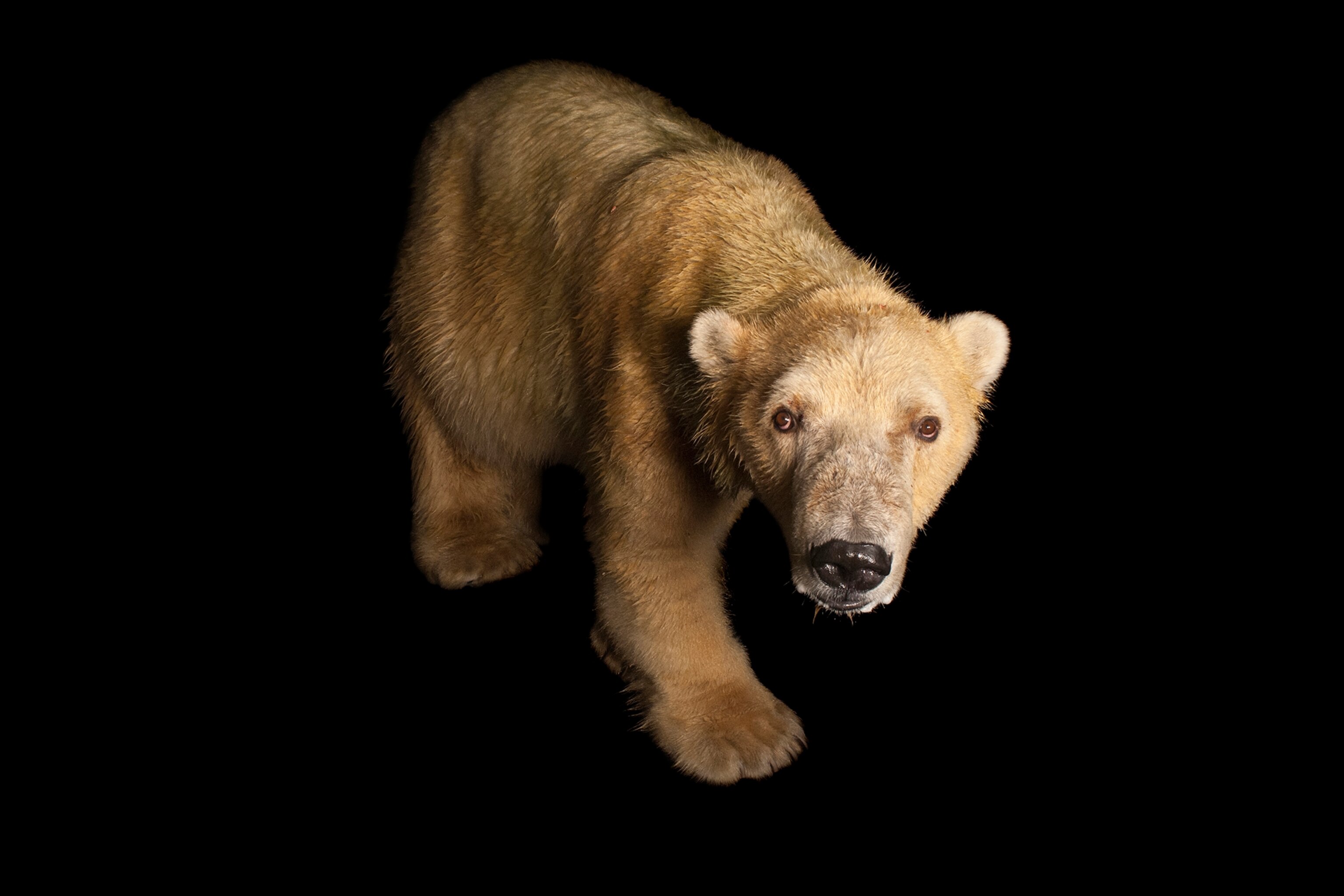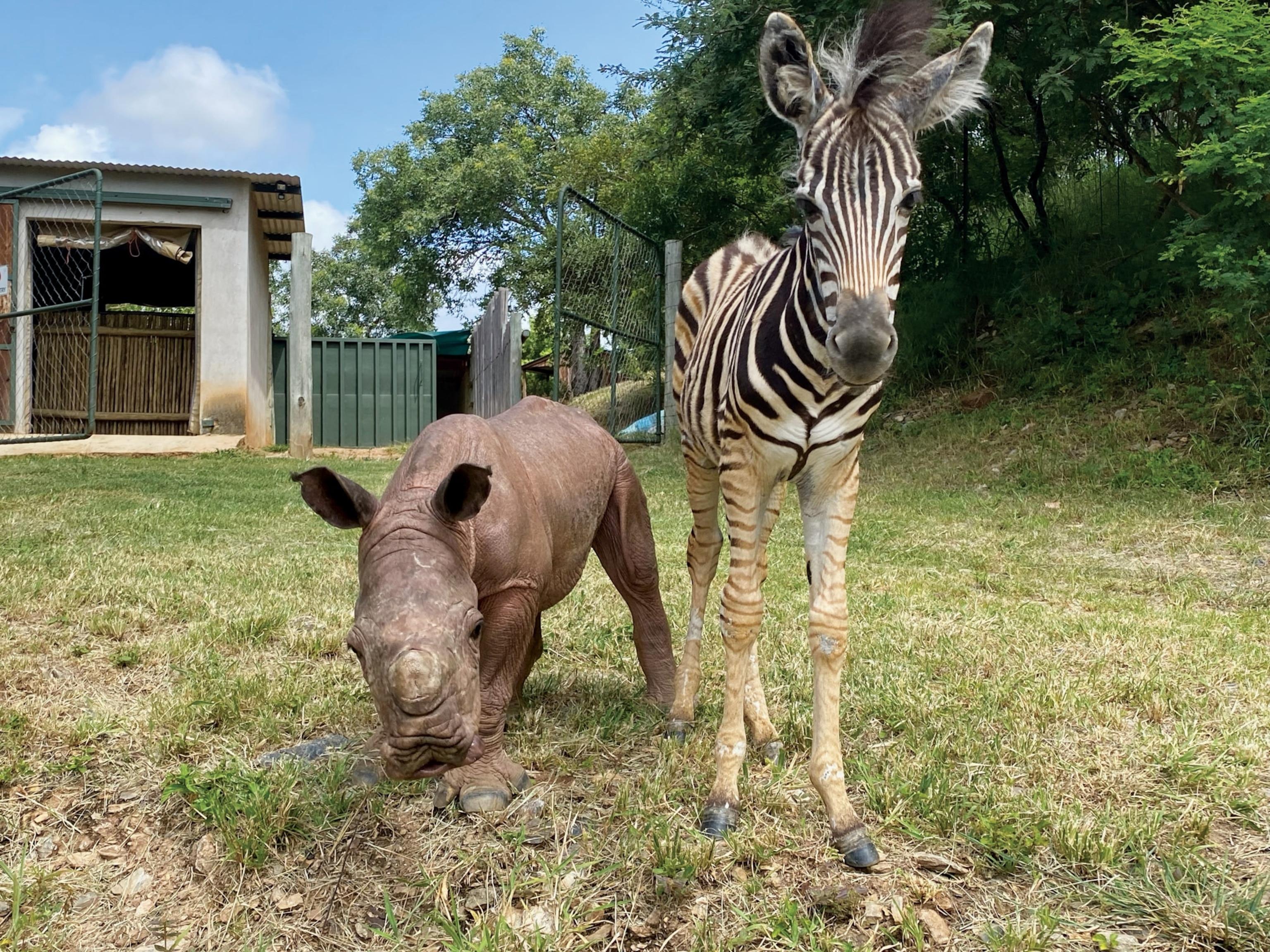
Do Zebras Have Stripes On Their Skin?
What's under animals' hair and fur coats may surprise you.
Spring is coming, and as some of us prepare to trade snowsuits for swimsuits, we may find a few extra pounds under our winter coats.
Animals are smart. They never take their coats off. (Before and After: See Animals Change Their Coats for Winter.)
But what does animal skin look like under fur or hair—especially strikingly patterned animals such as big cats and zebras? Reader Christian Meyer asked Weird Animal Question of the Week to investigate.
What Lies Beneath
The short answer is it depends on the animal.
All mammalian hair color is dictated by melanin-producing cells, called melanocytes, that live within hair follicles. Melanocytes that live between follicles control skin color, says Greg Barsh, a geneticist at Hudson Alpha Biotechnology Institute in Huntsville, Alabama.
The two systems are controlled by different genes, hormones, and other factors, says Barsh, who studies the genetics of animal color patterns.
"We know that in situations where stripes are apparent in the hair, they are not apparent in skin," Barsh says, citing domestic cats, domestic dogs, horses, zebras, and cheetahs as examples.

For instance, zebra skin is black under their black-and-white striped coats. Giraffe skin is a uniform light tan that's similar in color to that of its coat, and its patterns are not visible, Mads Bertelsen, a materials scientist at Denmark's Copenhagen University, says via email. (Read why zebras have stripes.)
Cheetahs—which are actually more closely related to small cats—“definitely do not have spots or lines on their [tan] skin,” says Vincent van der Merwe, a biologist at South Africa’s Endangered Wildlife Trust. (Learn more about van der Merwe's work as a cheetah matchmaker.)

However big cats, such as tigers, have skin patterns that mirror their fur, says van der Merwe. The same goes for snow leopards, as seen in this video of a captive cat undergoing a surgical procedure to relieve kidney stones and this photo of a shaved snow leopard cub.
That's likely because the colored hair follicles embedded in the skin are visible, similar to a man's five-o'clock shadow, Barsh says.
Boone Smith, an independent big cat researcher who has shaved the skin of wild cougars to draw blood or place tags, has also observed the animals have the same skin color. Their fur is varying degrees of brown, white, gray, and even black hair, and the "follicles seem to give the skin a slightly different contrast."
Polar Opposites

Polar bears have black skin under their fur, likely to help absorb the sunshine, says Daryll Hedman, regional wildlife manager for Manitoba Conservation in Canada.
When the bears molt out of their dense undercoat in the spring, “wee patches of black skin” are visible, Hedman says.
“The hair, if you take a couple of strands, looks clear,” Hedman says, though the bears look “bone white on the ice” because of the way the hair scatters light. This also helps the predators blend into their polar environment. (Read how polar bears are coping with a changing climate.)

Some primates can have colorful skin, especially male Old World monkeys—including patas, mandrills, vervets, talapoins, and lesula—some of which have blue testicles.
Though the blue pigments are not completely understood, they're likely linked to sexual selection. (In mandrills, color has been linked to social status.)
When baboons are born, “their noses, hands, and ears are very, very pink, but darken with age,” Fred Bercovitch, a wildlife biologist at Japan's Kyoto University, says via email.
“Their fur does the opposite,” Bercovich says. It’s “quite black when born, but turns to brindle-grey when older.”
Oh, we have no idea what that feels like.
Have a question about the weird and wild world? Tweet me, leave me a note in the comments, or find me on Facebook. Weird Animal Question of the Week answers your questions every Saturday.
You May Also Like
Go Further
Animals
- How can we protect grizzlies from their biggest threat—trains?How can we protect grizzlies from their biggest threat—trains?
- This ‘saber-toothed’ salmon wasn’t quite what we thoughtThis ‘saber-toothed’ salmon wasn’t quite what we thought
- Why this rhino-zebra friendship makes perfect senseWhy this rhino-zebra friendship makes perfect sense
- When did bioluminescence evolve? It’s older than we thought.When did bioluminescence evolve? It’s older than we thought.
- Soy, skim … spider. Are any of these technically milk?Soy, skim … spider. Are any of these technically milk?
Environment
- Are the Great Lakes the key to solving America’s emissions conundrum?Are the Great Lakes the key to solving America’s emissions conundrum?
- The world’s historic sites face climate change. Can Petra lead the way?The world’s historic sites face climate change. Can Petra lead the way?
- This pristine piece of the Amazon shows nature’s resilienceThis pristine piece of the Amazon shows nature’s resilience
- Listen to 30 years of climate change transformed into haunting musicListen to 30 years of climate change transformed into haunting music
History & Culture
- Meet the original members of the tortured poets departmentMeet the original members of the tortured poets department
- Séances at the White House? Why these first ladies turned to the occultSéances at the White House? Why these first ladies turned to the occult
- Gambling is everywhere now. When is that a problem?Gambling is everywhere now. When is that a problem?
- Beauty is pain—at least it was in 17th-century SpainBeauty is pain—at least it was in 17th-century Spain
Science
- Here's how astronomers found one of the rarest phenomenons in spaceHere's how astronomers found one of the rarest phenomenons in space
- Not an extrovert or introvert? There’s a word for that.Not an extrovert or introvert? There’s a word for that.
- NASA has a plan to clean up space junk—but is going green enough?NASA has a plan to clean up space junk—but is going green enough?
- Soy, skim … spider. Are any of these technically milk?Soy, skim … spider. Are any of these technically milk?
Travel
- Could Mexico's Chepe Express be the ultimate slow rail adventure?Could Mexico's Chepe Express be the ultimate slow rail adventure?
- What it's like to hike the Camino del Mayab in MexicoWhat it's like to hike the Camino del Mayab in Mexico




